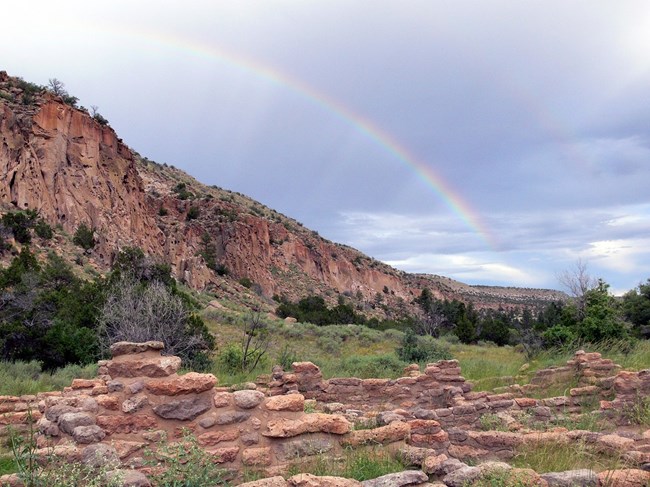Learn about NRCAs
The Natural Resource Condition Assessment (NRCA) Program provides framework, funding, and publishing support to parks to aid in the synthesis and documentation of natural resource conditions. Condition assessment reports are a tool to describe selected park resources, and record a snapshot of their current condition, identify trends, and identify potential or current threats and stressors. Understanding the condition and trend of natural resources is key for parks and NPS planners to appropriately prioritize and allocate stewardship resources.

NPS Photo
Traditional NRCA Report: 2015
In an effort to better understand the natural resources and processes present in Bandelier National Monument, a Natural Resource Condition Assessment was conducted and subsequently published in 2015. This assessment began in 2010, but was interrupted one year later by the Los Conchas Fire, which burned over 60% of the monument. The full impact of the Las Conchas Fire on ponderosa pine and mixed conifer forests has not yet been assessed. Nor are the long-term effects or recovery times known for wildlife communities that depend on forested habitats, such as breeding bird communities. National Park Service Staff coordinated this project, and chose 23 resource topics to evaluate, which will help guide future goals and direction as the monument resource management focus transitions to preserving key ecological processes.
- Fire history and ecology |
- Native fish |
||||||||
- Montane grasslands |
- Landbirds |
||||||||
- Mixed conifer/aspen forest |
- Mexican spotted owl |
||||||||
- Aspen trees |
- Jemez mountain salamander |
||||||||
- Ponderosa pine forest and woodland |
- Mountain lion |
||||||||
- Pinon juniper woodland |
- American pika |
||||||||
- Rare plant species |
- River otters |
||||||||
- Rio Grande corridor and associated riparian vegetation |
- Lynx |
||||||||
- Rito de los Frijoles and Capulin Creek and associated riparian vegetation |
- Bighorn sheep |
||||||||
- Water quality and aquatic macroinvertebrates |
- Natural Sounds |
||||||||
|
|
- Air quality |
Bandelier National Monument managers will strive to preserve key ecological processes, and continue to adaptively manage the resources within this important expanse. Because of historical human intervention prior to the park’s establishment, many keystone ecosystem processes and species are missing or declining. Maintaining the stability of core management principles will serve as a strong foundation from which to build successful resource management strategies as priorities shift with changing conditions.
For other reports and natural resource datasets visit the NPS Data Store.
Source: NPS DataStore Collection 7765 (results presented are a subset). To search for additional information, visit the NPS DataStore.
Last updated: August 15, 2022
